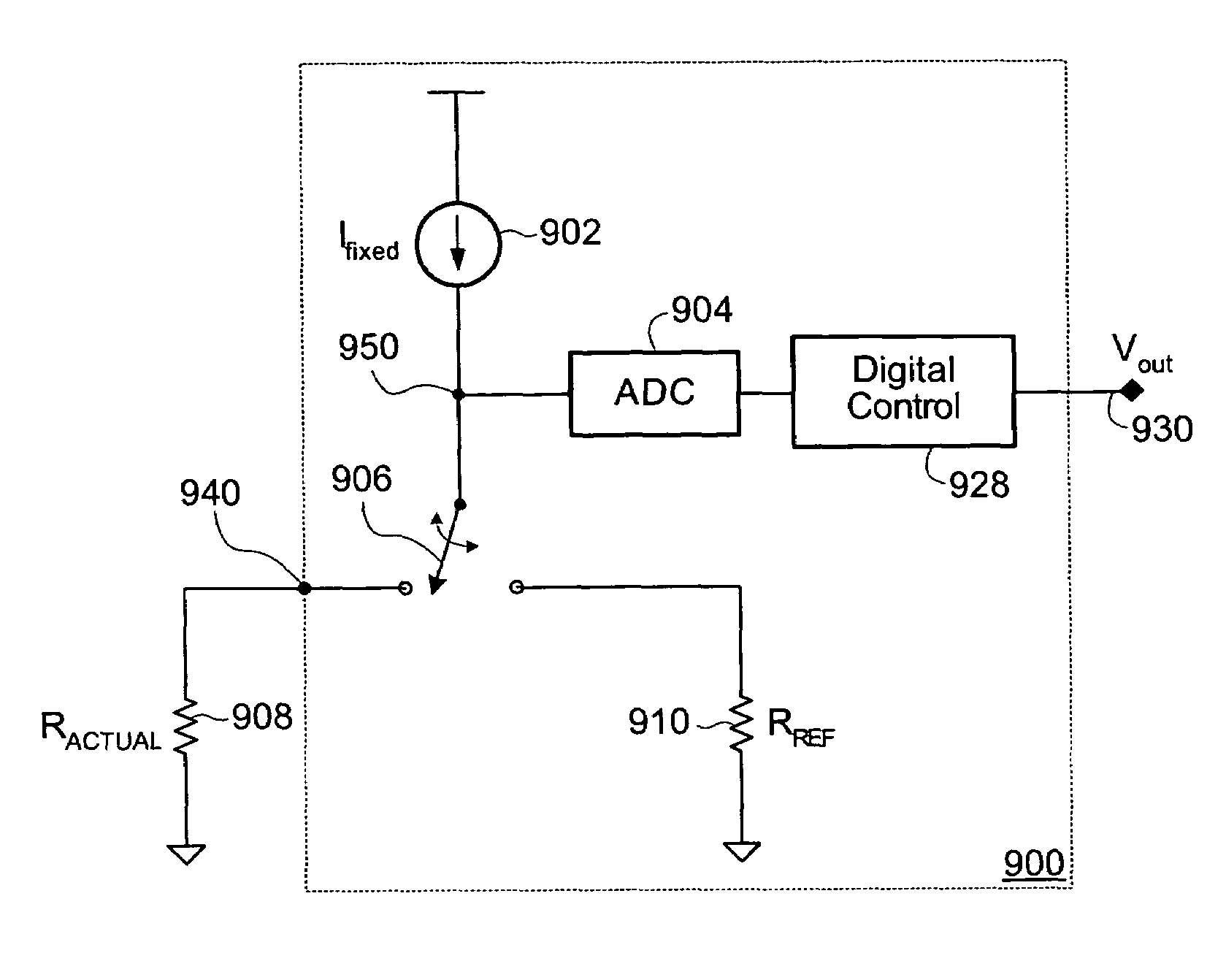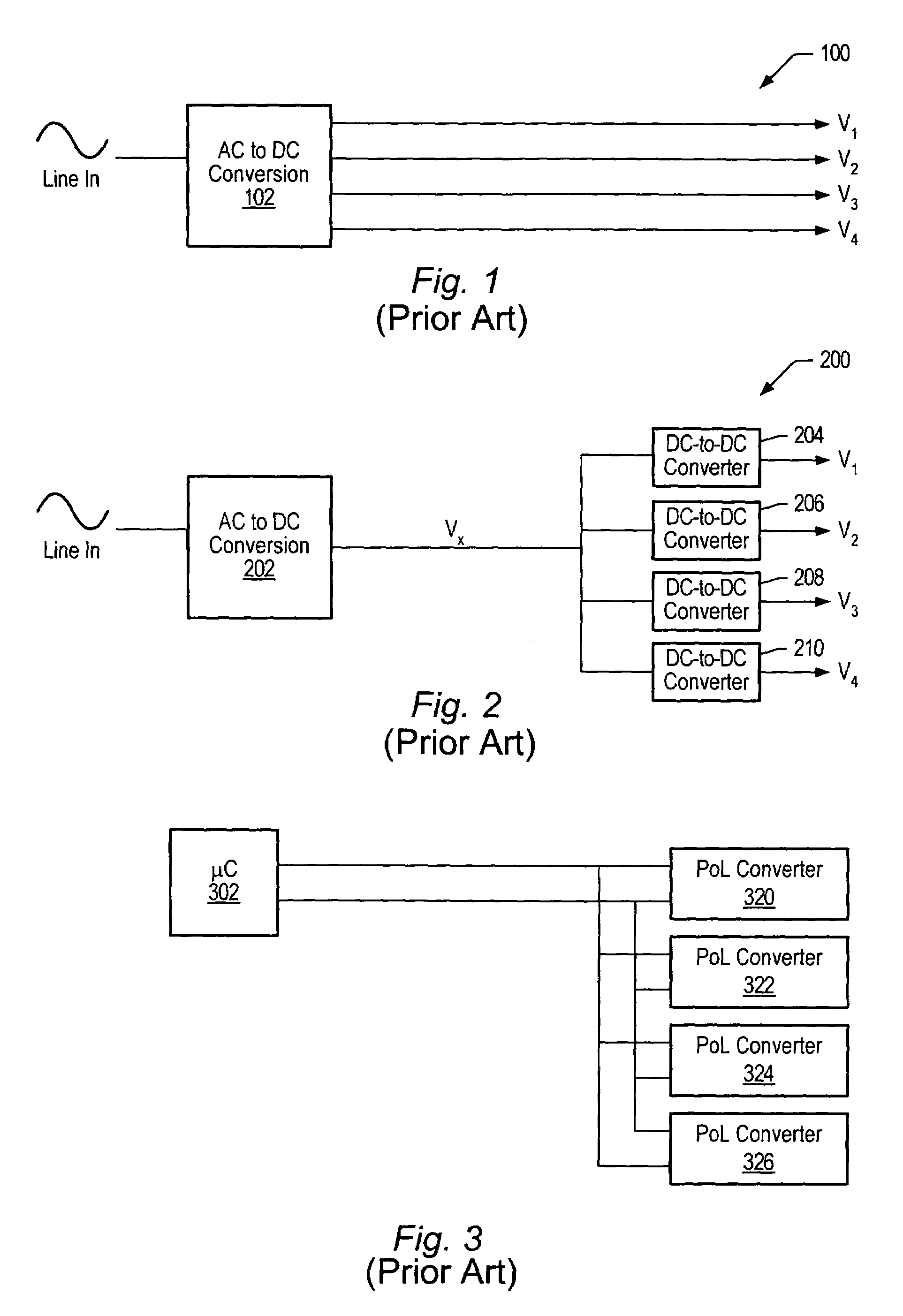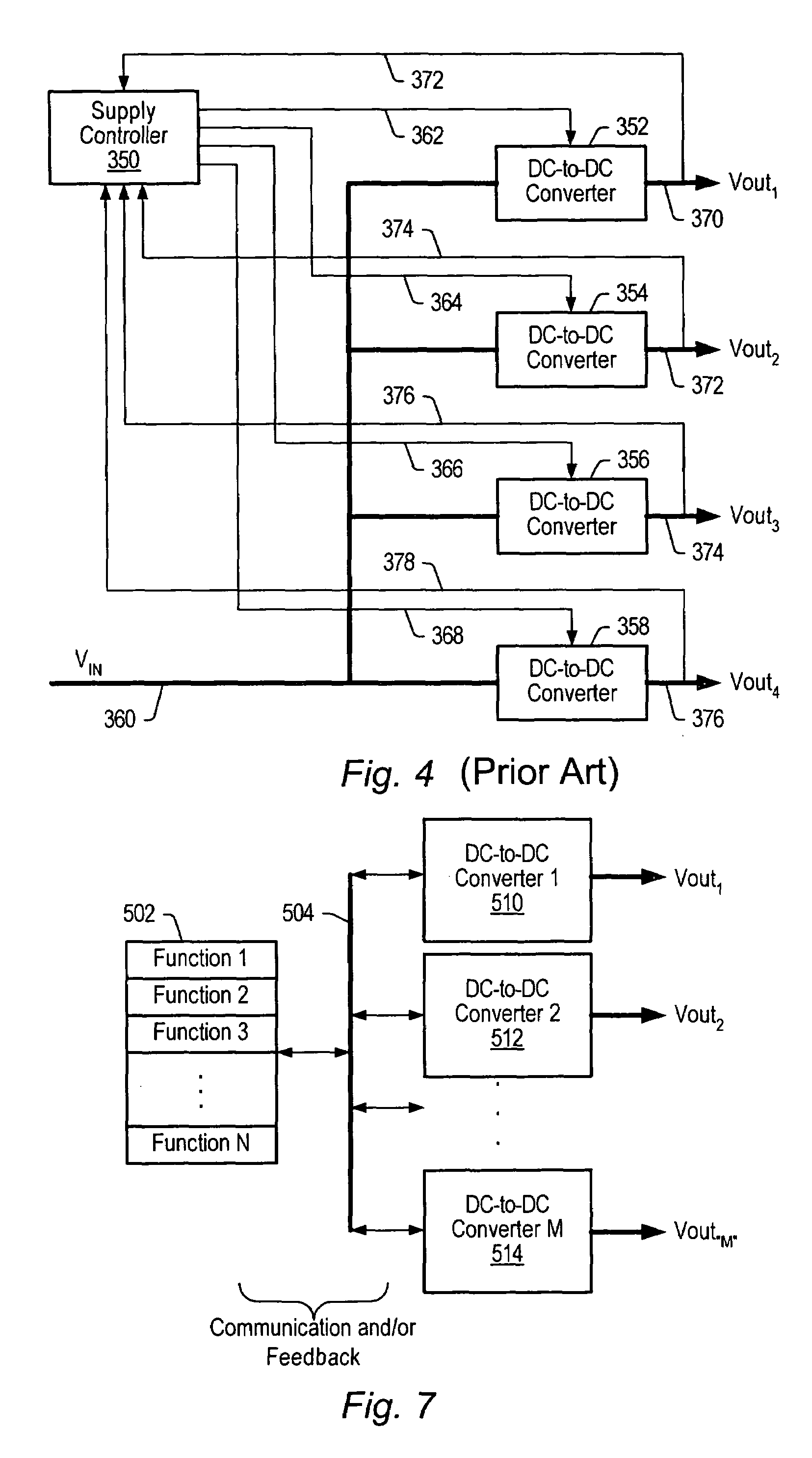Method for accurately setting parameters inside integrated circuits using inaccurate external components
- Summary
- Abstract
- Description
- Claims
- Application Information
AI Technical Summary
Benefits of technology
Problems solved by technology
Method used
Image
Examples
Embodiment Construction
[0059]The following references are hereby incorporated by reference in their entirety as though fully and completely set forth herein:
[0060]U.S. Patent Application Publication No. 2004 / 0201279 (Ser. No. 10 / 820,976), titled “Method And Apparatus For Improved DC Power Delivery, Management And Configuration,” filed Jun. 21, 2004.
[0061]U.S. patent application Ser. No. 11 / 198,698, titled “Method For Using a Multi-Master Multi-Slave Bus For Power Management,” filed Aug. 5, 2005.
[0062]FIG. 7 is a block diagram of one embodiment of a power distribution system. As shown, the common functions required in a complex DC power system may be combined in a single controller rather than treated as separate IC functions. As illustrated in the embodiment of FIG. 7, a controller 502 managing functions 1 through N may be coupled to DC-to-DC converters 1 through M (illustrated by example as power converters 510, 512 and 514) via a digital bus 504. Digital bus 504 may be a serial bus enabling communicatio...
PUM
 Login to View More
Login to View More Abstract
Description
Claims
Application Information
 Login to View More
Login to View More - R&D
- Intellectual Property
- Life Sciences
- Materials
- Tech Scout
- Unparalleled Data Quality
- Higher Quality Content
- 60% Fewer Hallucinations
Browse by: Latest US Patents, China's latest patents, Technical Efficacy Thesaurus, Application Domain, Technology Topic, Popular Technical Reports.
© 2025 PatSnap. All rights reserved.Legal|Privacy policy|Modern Slavery Act Transparency Statement|Sitemap|About US| Contact US: help@patsnap.com



